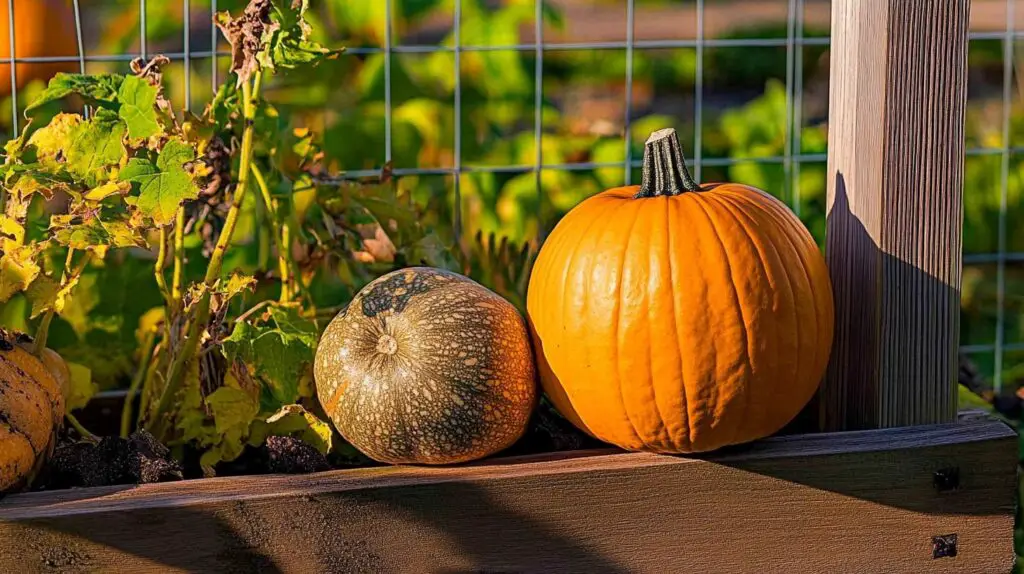When I first began experimenting with trellising pumpkins, I thought a few bamboo hoops would be enough to guide their climb. But like many new gardeners, I quickly learned how fast these vines can outgrow weak supports. Within days, my raised bed turned into a jungle of curling tendrils and sprawling leaves.
If you’re struggling with small-space gardening or tired of cleaning mud off your pumpkins, trellising pumpkins can completely transform your approach. Not only does it free up garden space, but it also protects your gourds from soil rot and improves airflow around the vines.
Want to explore even more creative vertical setups? Check out these 10 innovative DIY garden trellis ideas for inspiration.
Table of Contents
Why Grow Pumpkins Vertically?
Pumpkin vines are notorious for stretching 10 to 20 feet or more, making them one of the most space-hungry plants in the home garden. Left unchecked, they’ll sprawl across beds, crowd out neighboring plants, and monopolize valuable growing space. That’s where trellising pumpkins becomes a game-changer.
Growing pumpkins vertically isn’t just about saving space—it brings a host of other benefits too:
Benefits of Trellising Pumpkins
- Keeps Fruit Off the Ground: Elevating the pumpkins reduces the risk of rot, slug damage, and soil-borne diseases.
- Improves Air Circulation: Vertical growth increases airflow around foliage, which helps prevent mildew and fungal issues.
- Saves Garden Space: Ideal for compact yards, raised beds, and even balcony containers.
- Cleaner, Healthier Fruit: Pumpkins grown off the soil are less prone to blemishes and more likely to ripen evenly.
- Easier Pest Monitoring: It’s much simpler to spot aphids, squash bugs, or powdery mildew when plants are upright and accessible.
- Enhances Garden Aesthetics: A thriving pumpkin trellis adds visual height and charm to any garden layout.
If you’ve been hesitant to grow pumpkins because of their size, trellising offers a surprisingly manageable way to enjoy homegrown gourds—even in the smallest garden plots.
Best Trellis Options for Pumpkins
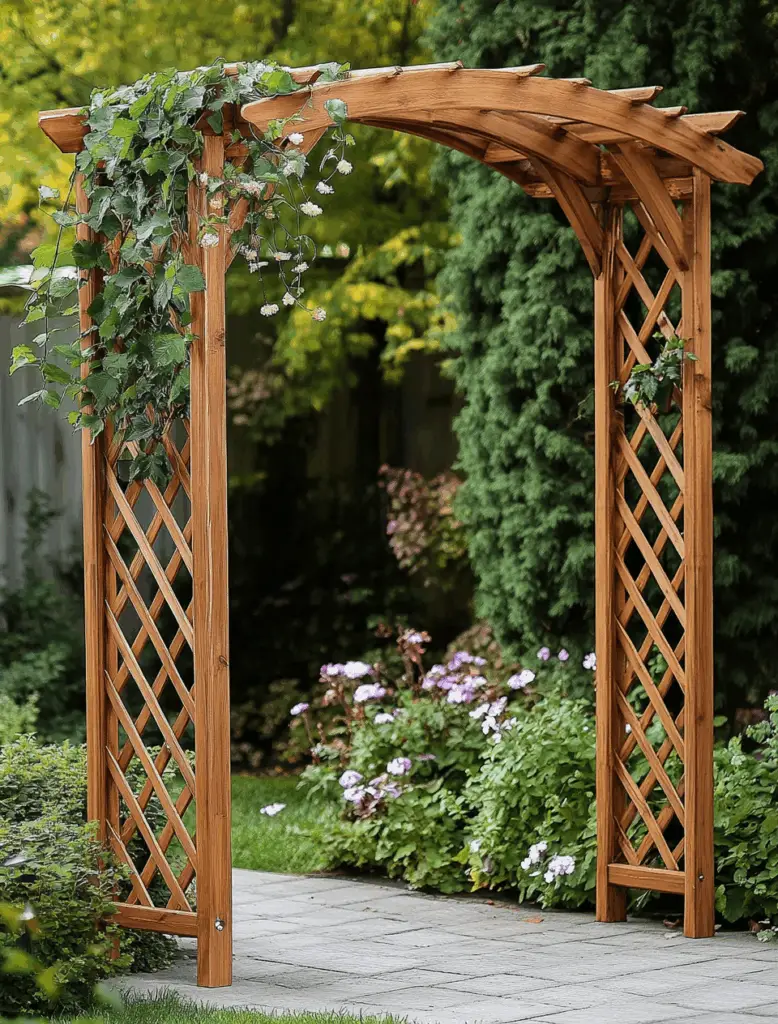
Choosing the right support structure is essential when trellising pumpkins, especially since different varieties have different growth habits and weight loads. Not all trellises are created equal—lightweight frames may suit mini pumpkins, while sturdier options are needed for heavy cooking gourds. Below, you’ll find some of the most effective and gardener-approved methods for trellising pumpkins, along with tips for selecting the best setup based on your garden size and gourd type.
Need help getting started with a homemade option? Explore these innovative DIY garden trellis ideas to build a structure that suits your needs.
DIY Trellis: Custom Fit for Any Garden
For flexibility and affordability, a DIY trellis is hard to beat. Here’s how to build one:
- Drive two U-posts into the ground about 5 feet apart.
- Attach nylon netting or sturdy garden mesh between them using zip ties.
- Ideal placement: behind raised beds or alongside containers.
Best for: Small to medium varieties like ‘Sugar Pie’ or ‘Cinderella’.
Tip: This setup is especially useful for urban or raised-bed gardeners looking for a budget-friendly vertical support.
Pea Fence: Tall, Foldable, and Sturdy
A pea fence offers a pre-made solution with decent height—typically around 8 feet tall. These foldable metal panels provide ample climbing space and strong support for heavier vines.
Best for: Medium varieties such as ‘Triple Treat’, ‘Jarrahdale’, or ‘Fairytale’.
Tip: Install the fence at the north end of your garden to prevent shading out smaller crops.
Tomato Cage: Compact Yet Effective
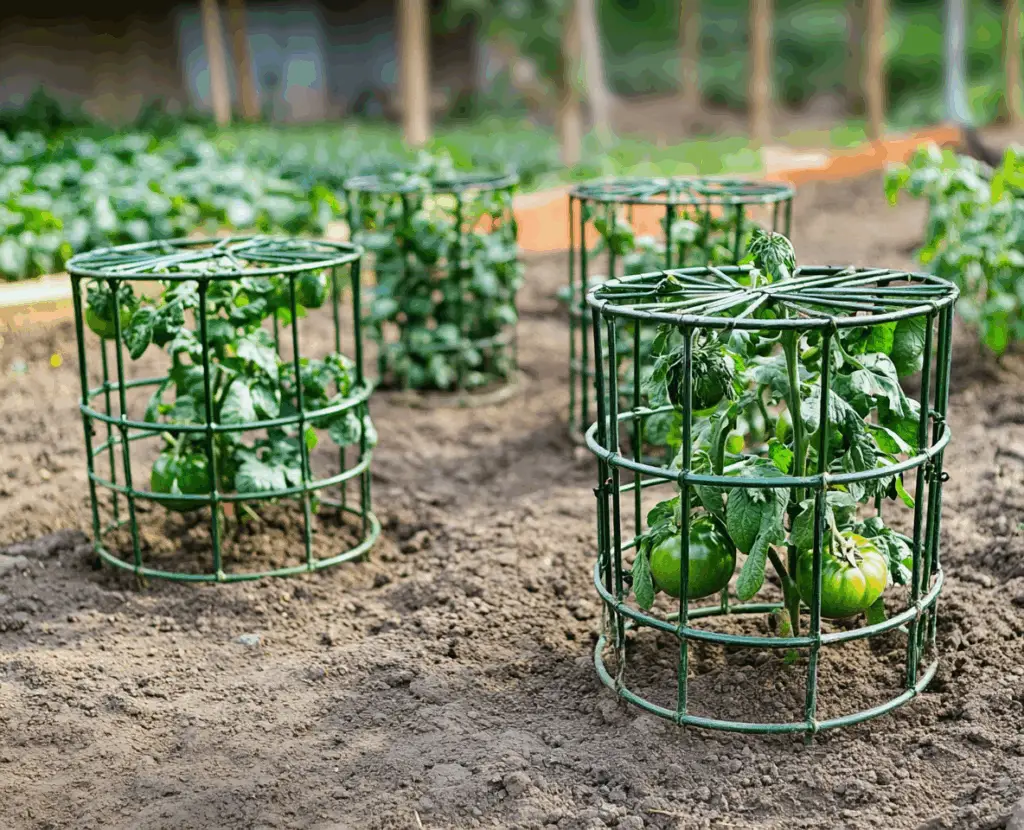
A tall tomato cage—ideally 54 inches or more—can serve as a compact trellis for pumpkins with a smaller, bush-type growth habit. This is a great method for trellising pumpkins in container gardens or raised beds, where space is limited and portability matters. It’s a quick, low-cost solution that works especially well for decorative or small culinary varieties like ‘Jack Be Little’ or ‘Orange Smoothie’.
Looking to optimize your patio or raised bed setup? Avoid these common raised bed gardening mistakes that could limit your vertical success.
Best for: Small pumpkins like ‘Jack Be Little’, ‘Orange Smoothie’, or ‘Baby Boo’.
Tip: Anchor the cage deeply into the soil to avoid tipping as vines mature and fruits develop.
Trellised Arbor: Functional and Beautiful
If you’re aiming for both beauty and utility, a trellised arbor is a standout choice. These garden arches support climbing vines while creating a stunning focal point.
- Often comes with integrated planters or growing boxes.
- Strong enough to bear the weight of large gourds.
Best for: Large, heavy varieties such as ‘Howden’, ‘Musquee de Provence’, or ‘Jack-O’-Lantern’.
Tip: Place at garden entrances or pathways to combine form and function.
Training Young Plants to Climb
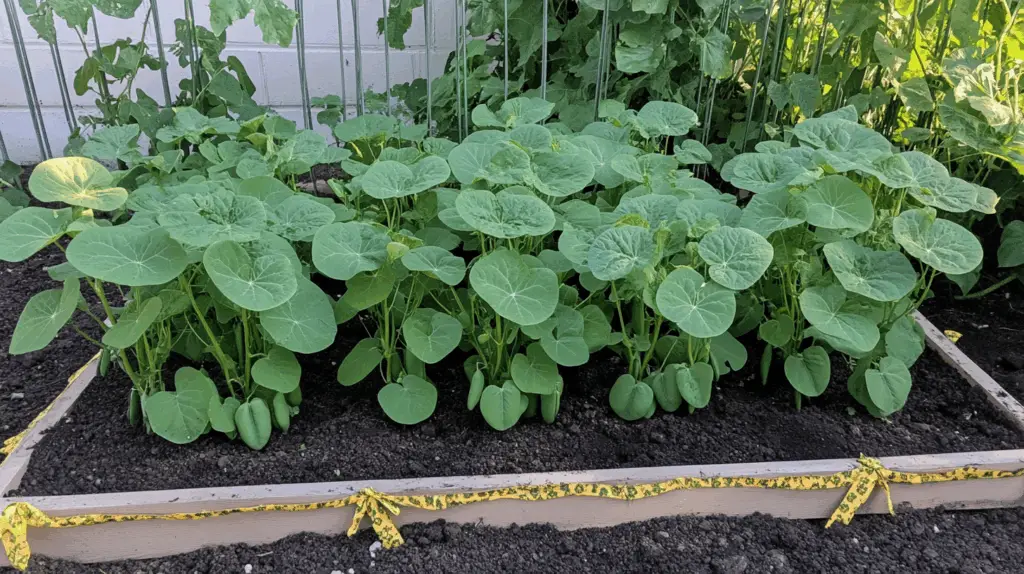
To successfully start trellising pumpkins, timing and technique matter—especially during the early growth phase. Whether you’re starting seeds indoors or sowing directly outdoors, positioning and support from the start make all the difference in vertical success.
When and How to Plant
- Zones 7–9: Direct sow seeds 1 inch deep right beside your trellis after the final frost date.
- Zones 3–6: Start seeds indoors in biodegradable peat pots about 3–4 weeks before your last frost. Transplant the entire pot outdoors next to the trellis once all danger of frost has passed.
Planting Tip: Place seedlings within 6 inches of your trellis so vines naturally reach for it as they grow. Choose a sunny spot with well-draining soil.
Supporting Young Vines
As the first true leaves emerge and vines begin to lengthen, it’s time to guide their climb:
- Use soft garden twine or fabric ties to loosely secure vines to the trellis.
- Avoid tight knots that could restrict growth or damage stems.
- For lattice or nylon netting structures, simply weave the vines through openings—no ties needed in many cases.
Daily Maintenance for Upright Growth
Training is an active process, especially during peak growth periods. Make it part of your daily garden routine:
- Check vine direction: Gently redirect wandering tendrils to stay on track.
- Monitor for pests: Aphids and cucumber beetles love hiding in dense vine growth.
- Add new ties as needed: Secure additional points along the vine for better support.
- Ensure airflow: Spacing flowers and leaves promotes better pollination and reduces mold risks.
Staying on top of vine management early means less tangling, fewer broken stems, and healthier fruit development later in the season.
Supporting the Fruit
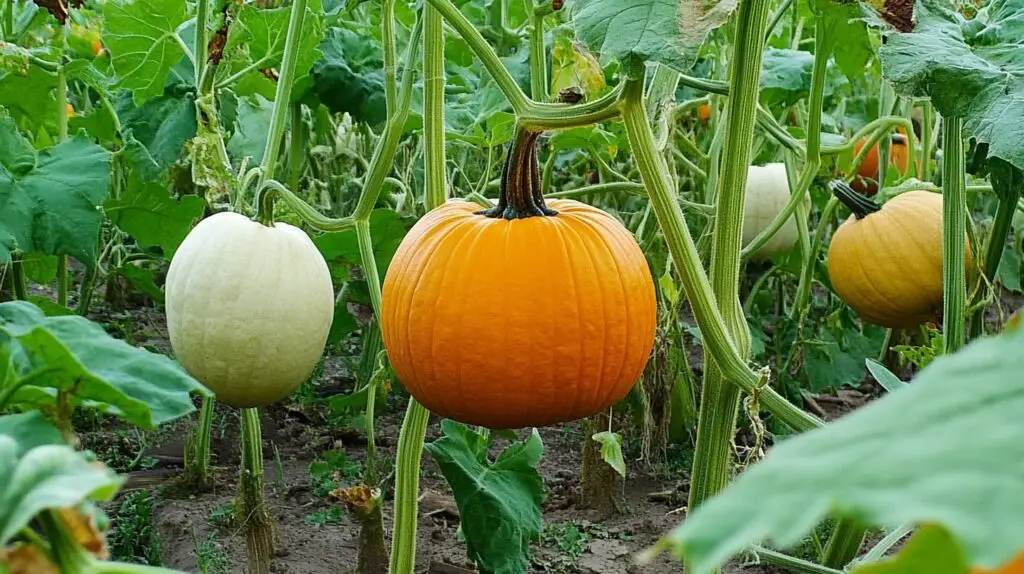
Once your vines begin to flower and small pumpkins appear, it’s time to shift focus to fruit support. While trellising pumpkins saves space and boosts vine health, it does require a little extra help to ensure developing gourds don’t strain or snap the vines under their weight.
Why Support Is Necessary
Pumpkins, even small ones, grow heavier than they look—and when grown vertically, that weight hangs directly from the vine. Without additional support:
- Vines can snap or collapse, especially in windy conditions.
- Fruits may detach prematurely, leading to incomplete ripening.
- Trellises may become unstable or deformed.
How to Use Fruit Slings
A fruit sling cradles the developing pumpkin and distributes its weight more evenly across the trellis.
- Use soft netting, mesh produce bags, or old T-shirts as DIY slings.
- Tie each end of the sling to the trellis, creating a gentle hammock for the fruit.
- Adjust as the fruit grows, ensuring there’s enough stretch and airflow.
Tip: For large varieties like ‘Howden’ or ‘Musquee de Provence’, choose strong materials such as stretchy garden fabric or durable mesh bags to accommodate size and weight.
Additional Support Options
If you don’t have slings on hand, get creative:
- Repurpose bamboo hoops beneath fruits to relieve stress from the vine.
- Suspend fruit in soft cloth bags attached securely to the frame.
- For lighter varieties, sometimes the vine’s natural curl and tendrils are enough—but when in doubt, add support.
This extra step ensures that all your hard work training and trellising leads to beautiful, unblemished pumpkins come harvest time.
Final Tips for Trellising Pumpkins
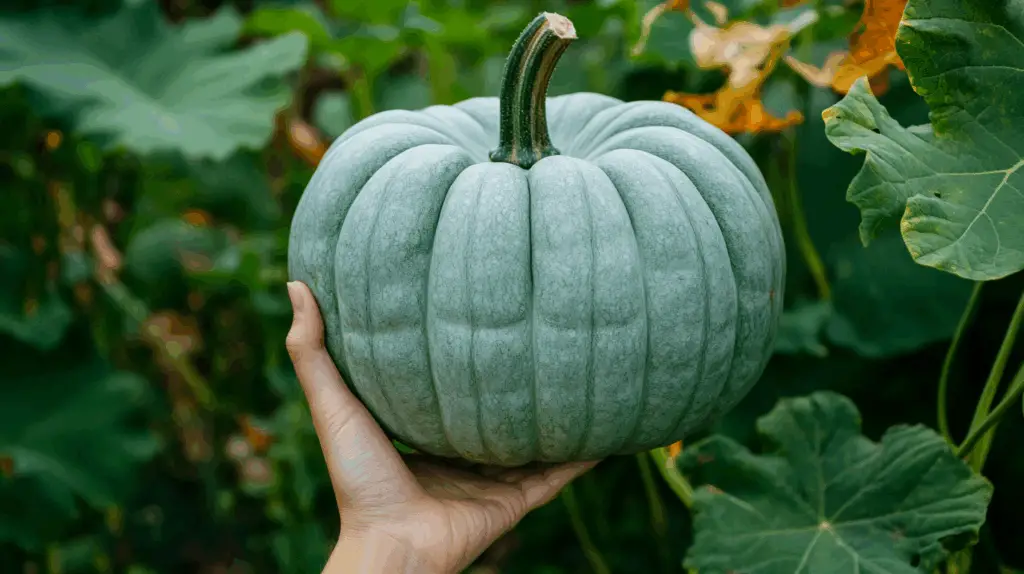
Mastering the art of trellising pumpkins can completely change how you approach gourd growing—especially in limited-space gardens. Whether you’re a first-time grower or a seasoned green thumb, these last tips will help you make the most of your vertical setup.
1. Start Training Early
Pumpkin vines are easiest to guide when they’re young and flexible. Begin training as soon as vines reach the trellis and be consistent in shaping their direction every day.
2. Choose the Right Varieties
Not all pumpkins are ideal for vertical growth. For best results:
- Small to medium types are easiest to manage: ‘Sugar Pie’, ‘Jack Be Little’, ‘Triple Treat’
- Larger varieties need stronger trellises and reliable sling support: ‘Howden’, ‘Musquee de Provence’
3. Monitor Growth Daily
- Redirect wayward vines
- Add support ties or slings as fruits develop
- Check for pests like squash bugs or powdery mildew
4. Use Quality Materials
Invest in strong, UV-resistant netting, durable trellis frames, and reusable garden ties. Your setup should withstand wind, rain, and the weight of maturing pumpkins.
5. Don’t Forget Pollination
Improved airflow is one of the many benefits of trellising pumpkins, as it helps reduce disease and improves flower exposure. However, in gardens with low bee activity—especially in urban or enclosed spaces—some vertical growers may need to hand-pollinate their pumpkins to ensure successful fruit set. Simply use a soft brush or cotton swab to transfer pollen from male flowers to female ones, which are identifiable by the small swelling behind the bloom.
Need a visual example of how this works with other climbing crops? Check out these DIY pea trellis ideas, where pollination and training go hand in hand.
🧠 Frequently Asked Questions (FAQ)
1. Can all pumpkin varieties be grown on a trellis?
While trellising pumpkins is highly effective, not all varieties are well-suited for vertical growth. Smaller and medium-sized types like ‘Jack Be Little’, ‘Triple Treat’, and ‘Cinderella’ thrive when grown up a sturdy support system. These lighter gourds are easier to train and don’t require heavy-duty reinforcement.
Larger pumpkins can still be trellised—but they demand strong trellises, durable slings, and extra attention to vine support. If you’re working with limited space, it’s best to start with compact varieties. For more ideas tailored to tight growing areas, check out our guide on maximizing small backyard spaces.
2. What is the best trellis for trellising pumpkins in small gardens?
For small-space gardeners, a DIY trellis is one of the most effective tools for trellising pumpkins. Using simple materials like U-posts and nylon netting, you can create a vertical support system that fits neatly behind raised beds or next to containers. This setup is not only affordable and space-efficient but also strong enough to support small to medium pumpkin varieties.
Want step-by-step ideas? Explore these 10 innovative DIY garden trellis projects perfect for small gardens and vertical growers.
3. When should I start training pumpkin vines to climb?
To make trellising pumpkins successful, timing is key. Begin training your vines as soon as they develop true leaves and start to vine—typically around 2 to 3 weeks after germination. The younger the plant, the more flexible and responsive it is to vertical guidance, making it easier to shape growth early and avoid tangled stems later.
If you’re just getting started, this beginner-friendly guide to growing vegetables is a great resource to pair with your vertical pumpkin plans.
4. Do I need to support the pumpkins themselves?
Absolutely. When trellising pumpkins, supporting the fruit is just as important as training the vines. As pumpkins grow larger, their weight can place significant stress on the vine, potentially causing it to snap or detach prematurely. To prevent this, use fruit slings, mesh bags, or even repurposed soft fabric to cradle each pumpkin and evenly distribute the load along your trellis.
If you’re growing vertically in a raised bed, be sure to avoid these common raised bed gardening mistakes that could affect support and vine stability.
5. Will vertical growing affect pumpkin size or yield?
No—trellising pumpkins doesn’t reduce fruit size or overall yield when done correctly. In fact, vertical growing often improves fruit quality by elevating the pumpkins off the ground, which reduces the risk of rot, slug damage, and disease. The key is to provide sturdy trellis support, proper fruit slings, and consistent care like watering and sunlight exposure.
For better results, consider pairing your vertical vines with smart layout strategies from these 20 best vegetable garden design ideas.
6. How do I hand-pollinate trellised pumpkins?
In vertical setups, especially when trellising pumpkins, flowers may not always attract enough pollinators—particularly in small or urban gardens. To boost your chances of successful fruiting, hand-pollination is a simple and reliable technique. Use a soft brush or cotton swab to transfer pollen from the center of a male flower to the stigma of a female flower (which has a small fruit behind it).
This hands-on method ensures your vertically grown pumpkins develop properly. If you’re already growing other climbing crops, these DIY pea trellis ideas offer smart techniques you can adapt for your trellised gourds too.
7. Is trellising pumpkins worth the extra effort?
Absolutely! While trellising pumpkins requires a bit of early effort—especially in training vines and adding fruit support—the long-term rewards are more than worth it. Vertical growing helps you save space, keep fruit off damp soil, reduce pest issues, and produce cleaner, more uniform pumpkins.
This method is especially effective in raised beds or compact plots, where horizontal sprawl isn’t an option. If you’re gardening in tight quarters, this guide on maximizing small spaces for backyard farming is the perfect companion to your trellising strategy.
Conclusion
Trellising pumpkins is more than just a space-saving technique—it’s a smart, sustainable way to grow healthier plants and cleaner, more resilient fruit. By using the right trellis, starting vine training early, and supporting your pumpkins as they mature, you can transform even a small garden into a productive, vertical oasis.
From compact patios to raised beds, trellising pumpkins makes it possible to enjoy a bountiful harvest without sacrificing space or plant health. It’s an elegant solution that works in almost any environment. Want even more ways to grow upward? Check out our top vertical gardening trellis ideas to expand your setup.


